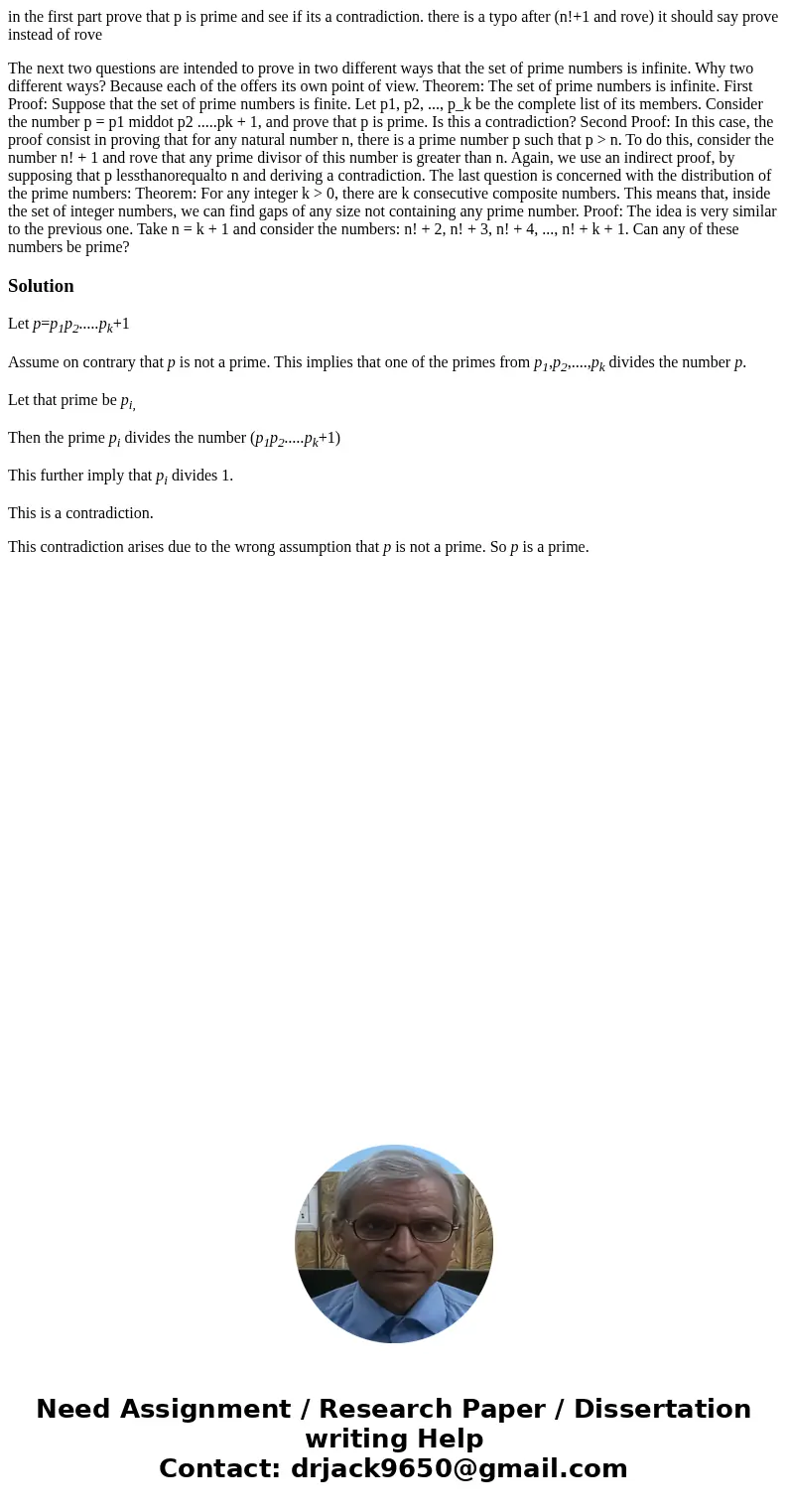in the first part prove that p is prime and see if its a con
in the first part prove that p is prime and see if its a contradiction. there is a typo after (n!+1 and rove) it should say prove instead of rove
The next two questions are intended to prove in two different ways that the set of prime numbers is infinite. Why two different ways? Because each of the offers its own point of view. Theorem: The set of prime numbers is infinite. First Proof: Suppose that the set of prime numbers is finite. Let p1, p2, ..., p_k be the complete list of its members. Consider the number p = p1 middot p2 .....pk + 1, and prove that p is prime. Is this a contradiction? Second Proof: In this case, the proof consist in proving that for any natural number n, there is a prime number p such that p > n. To do this, consider the number n! + 1 and rove that any prime divisor of this number is greater than n. Again, we use an indirect proof, by supposing that p lessthanorequalto n and deriving a contradiction. The last question is concerned with the distribution of the prime numbers: Theorem: For any integer k > 0, there are k consecutive composite numbers. This means that, inside the set of integer numbers, we can find gaps of any size not containing any prime number. Proof: The idea is very similar to the previous one. Take n = k + 1 and consider the numbers: n! + 2, n! + 3, n! + 4, ..., n! + k + 1. Can any of these numbers be prime?Solution
Let p=p1p2.....pk+1
Assume on contrary that p is not a prime. This implies that one of the primes from p1,p2,....,pk divides the number p.
Let that prime be pi,
Then the prime pi divides the number (p1p2.....pk+1)
This further imply that pi divides 1.
This is a contradiction.
This contradiction arises due to the wrong assumption that p is not a prime. So p is a prime.

 Homework Sourse
Homework Sourse